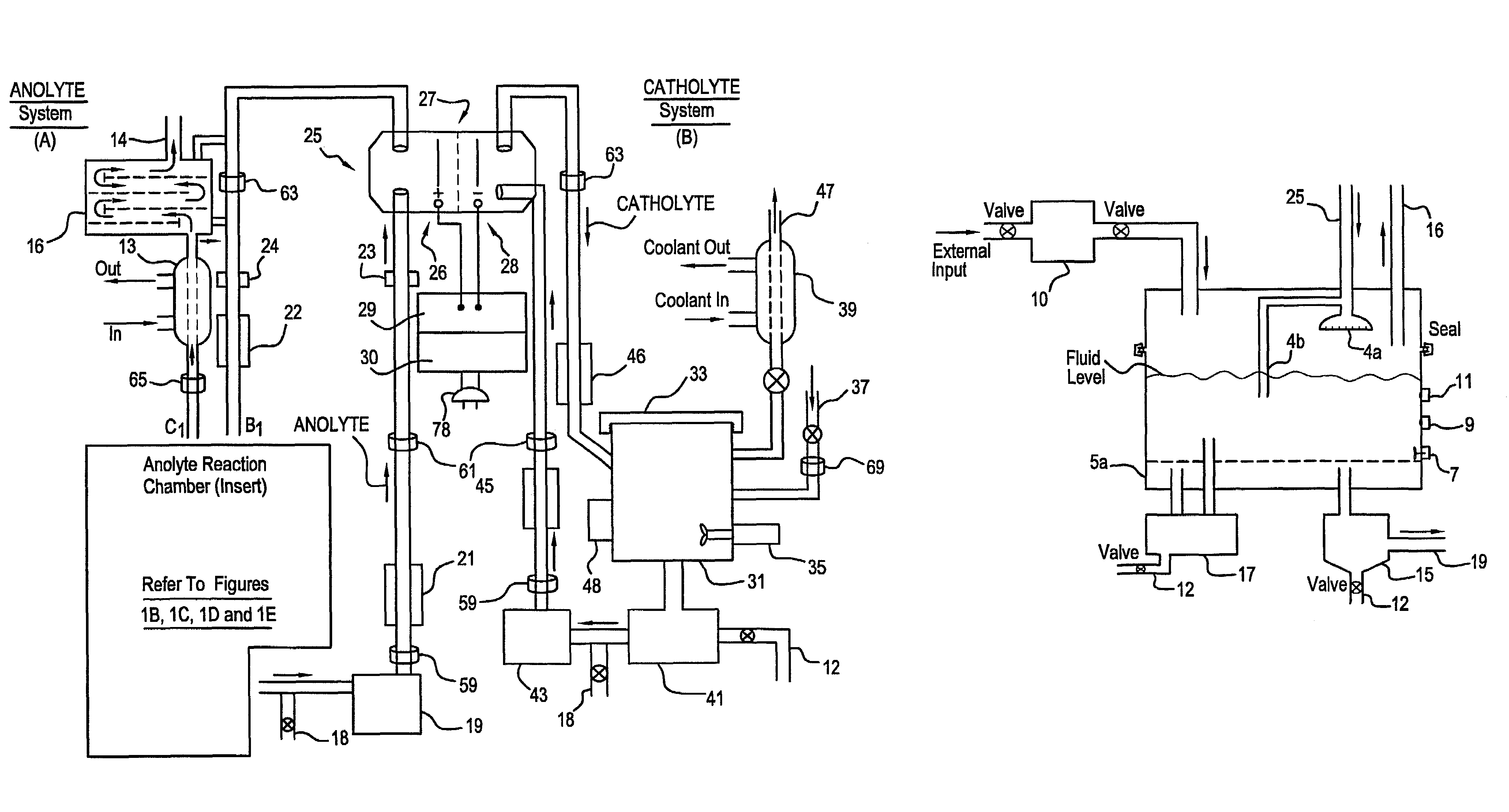Mediated electrochemical oxidation of animal waste materials
a technology of animal waste and electrochemical oxidation, which is applied in the direction of electrolysis components, separation processes, disinfection, etc., can solve the problems of increasing the burden on these companies as well as the whole country, the cost of equipment required is in the hundreds of millions of dollars, and the growth of animal waste, etc., to achieve the effect of enhancing the oxidation process and increasing the efficiency of the meo process
- Summary
- Abstract
- Description
- Claims
- Application Information
AI Technical Summary
Benefits of technology
Problems solved by technology
Method used
Image
Examples
examples
[0160]The following examples illustrate the application of the process and the apparatus.
Example (1) Destruction of Swine Manure
[0161]The environmental effects of swine manure storage systems and application methods are a concern, particularly with respect to surface water and ground water quality and to air quality as affected by odors and gaseous emissions from large-scale swine production operations. Over 50% of the swine production is done in confined quarters and the resulting manure is placed in anaerobic lagoons. The manure nitrogen is converted into ammonia in these lagoons and is lost to the atmosphere.
[0162]The swine diet is formulated with corn and / or grain sorghum and soy meal. Vitamins and minerals are added to the feed to makeup for any deficiency in the basic grain composition. The manure is a relatively homogeneous composition for the swine in confined areas. A sample of both air-dried and fresh moist manure was collected for test purposes. Each of the two samples wa...
example
(6) A Green Machine
[0167]The simplicity of the new system built for use with animal waste produces a system more economically to operate and cleaner to use than existing waste treatments. The system complexity is reduced by comparison to previous MEO systems, since there is not a requirement to deal with large quantities of halogens. The system is truly a ‘green machine’ in the sense of an environmentally benign system.
Example (7) System Flexibility
[0168]The system is built so that the composition of the electrolyte may be changed to adapt the system to a selected composition of the animal waste stream. Different types of animal waste can be processed by the same system by either using the same electrolyte or replacing the mediator and electrolyte (either or both the catholyte and anolyte) more suitable for the alternative animal waste. The system is configured with ports to flush and drain the anolyte and catholyte separately
Example (8) System By-Products are Safe
[0169]The system f...
PUM
| Property | Measurement | Unit |
|---|---|---|
| diameter | aaaaa | aaaaa |
| boiling point | aaaaa | aaaaa |
| temperature | aaaaa | aaaaa |
Abstract
Description
Claims
Application Information
 Login to View More
Login to View More - R&D
- Intellectual Property
- Life Sciences
- Materials
- Tech Scout
- Unparalleled Data Quality
- Higher Quality Content
- 60% Fewer Hallucinations
Browse by: Latest US Patents, China's latest patents, Technical Efficacy Thesaurus, Application Domain, Technology Topic, Popular Technical Reports.
© 2025 PatSnap. All rights reserved.Legal|Privacy policy|Modern Slavery Act Transparency Statement|Sitemap|About US| Contact US: help@patsnap.com



